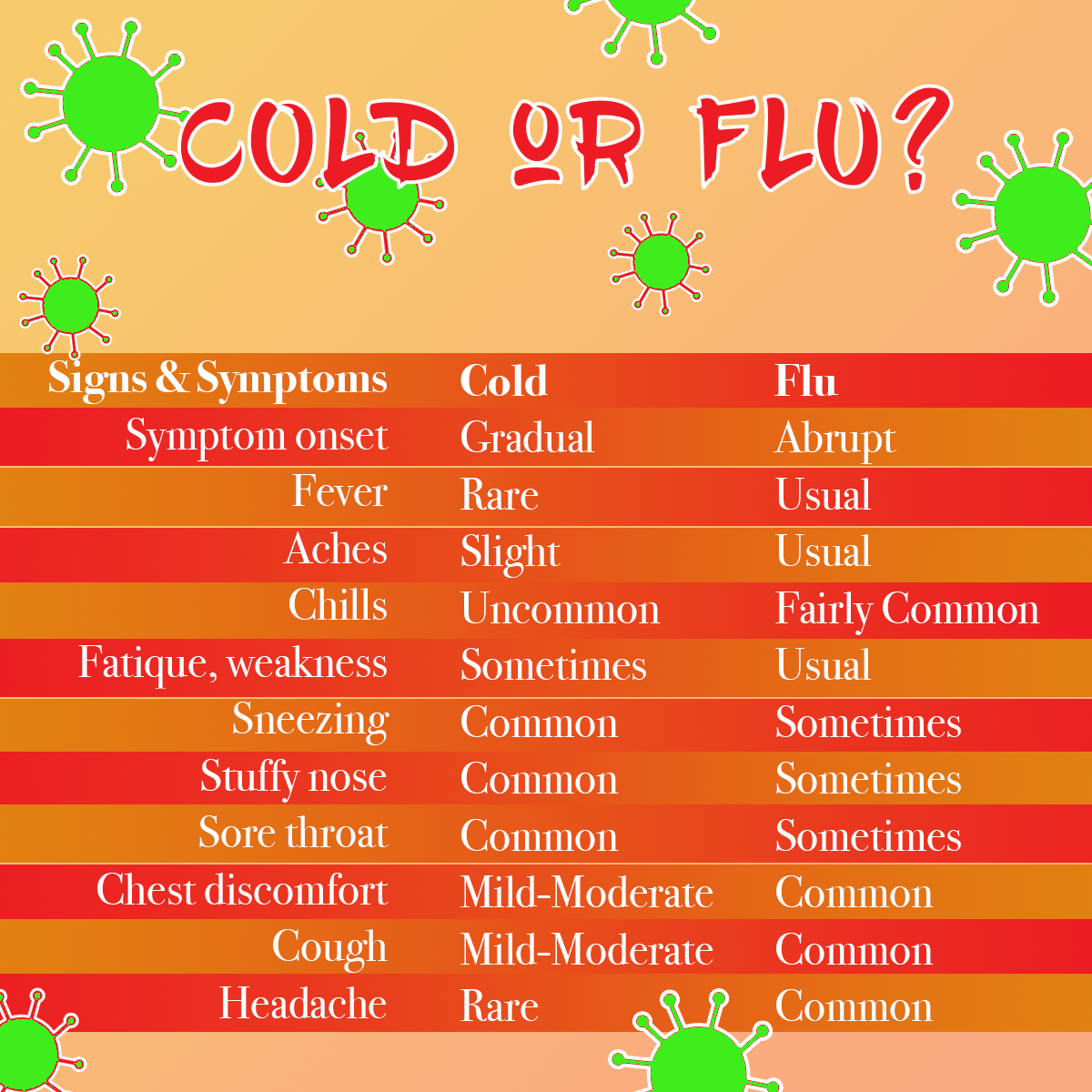
Have a Healthy New Year—Tips for Budgeting Health Expenses
December 18, 2024
Safety in the Sun
December 18, 2024By Susannah Wollman

“I hurt all over. My stomach’s upset and I have a headache. I must have the flu.”
But do you really? Every year the flu takes on new characteristics, but those new traits are actually more about the variant rather than symptoms. The influenza virus can be deadly, especially if the patient is old, very young, or have a depressed immune system.
So what do we do when we know we’re sick but we aren’t quite sure why? Here is some handy info for telling the flu and the common cold apart.
Facts About the Common Cold
More people visit the doctor for the common cold than any other condition. Only 2% of colds involve bacteria, yet antibiotics are prescribed for more than 60 percent of common colds.1
- There are more than 200 viruses that cause what is called “the common cold.” Colds cause minor infections of the nose and throat. The most common virus is called rhinovirus, causing 10 to 14 percent of colds.2 Most colds last for about a week, but in children, the elderly and those with suppressed immune systems they can last longer.
- Most adults can expect to contract two to four colds per year. Between September and May is the worst time for colds. However, young children suffer many more—from six to eight—colds every year. Since colds are extremely contagious, daycare centers and schools where children are grouped together are ideal incubators for upper respiratory viruses. Colds are spread by contact with droplets that contain the virus. Since children often sneeze on their hands and then touch toys or other kids, the virus quickly jumps from one to the next.
- As of today, there are no antiviral medications on the market that can treat the common cold. Bacterial infections are rare and antibiotics should not be taken for colds that do not have bacterial complications that arise from a cold.
Myths about the common cold
- You can catch a cold from being cold. This myth probably started because colds are most common in cold months, and because cold temperatures can make your nose run. Many studies have shown, however, that the temperature has nothing to do with catching a cold.
- Don’t bother treating the symptoms; they actually help you recover. Where this one came from is a mystery, but some people do believe that the symptoms themselves help you recover. Actually, the more you treat your symptoms, the more comfortable you will be and the less likely you will spread the virus.
- Antibiotics cure the common cold. Antibiotics can make it harder to recover from a cold because taking antibiotics when unneccessary can actually kill the “friendly” bacteria. Most colds are viral, not bacterial. In addition to already feeling lousy from the cold, antibiotics can add diarrhea and yeast infections to your misery.
- Feed a cold and starve a fever (or vise versa). When you are sick, with or without a fever, you need good nutrition to help your body fight off infection. If you just don’t feel well enough to eat, be sure and stay hydrated anyway. Eating chicken soup, however, is not a myth. Chicken has been called “Jewish penicillin,” and some benefits are derived from chicken soup. At any rate, it will help keep you hydrated.

Facts About the Flu
The contagious respiratory illness influenza (commonly called the flu) is caused by viruses in the lungs, throat, and nose. Every year, the constantly changing flu virus causes millions of illnesses, hospitalizations in the hundreds of thousands, and the death of thousands or tens of thousands of people.3
- The flu enters the body when drops of fluids from an infected person enters the mouth, nose, or eyes. When someone with the flu coughs or sneezes on somone else, that person has a greater chance of contracting the disease. Touching something the flu sufferer has sneezed or coughed on and then touching the face can also spread the infection.
- Most people who get the flu recover in about 10 days. However, especially in young children, the elderly, and anyone with a compromised immune system can develop complications such as pneumonia that can lead to hospitalization and sometimes death.
- Certain people should be very careful during flu season. If someone has certain chronic medical conditions—like asthma, diabetes, or heart disease—and pregnant women are more likely to develop complications.
Myths About the Flu4
- The flu is just a bad cold. Symptoms may be similar, but unlike a cold, influenza results in more that 36,000 deaths and 200,000 hospitalizations each year in the United States.
- If you feel okay, you can’t spread the flu. This one is wrong because 20% to 30% of people carrying the flu virus have no symptoms. Be sure to cover coughs and sneezes with disposable tissues and wash your hands frequently during flu season.
- A yearly flu shot really isn’t necessary. Although we can’t guarantee the flu shot this year will absolutely prevent you from getting the flu, doctors and scientists study the mutated virus strains to determine which is most likely to cause an outbreak each year. Even if you do get the flu, the shot will definitely make it much less serious.

Resources
- Psych Center
- The American Lung Association
- Centers for Disease Control and Prevention
- Harvard Medical School
[1] Collingwood, J. (2018, October 8). The Common Cold: Facts and Myths. [source]
[2] Facts About the Common Cold. (n.d.). [source]
[3] Flu Symptoms & Complications. (2019, September 18). [source]
[4] Harvard Health Publishing. (n.d.). 10 Flu Myths. [source]




